Leeks are not always in tip-top condition when it comes to pulling them up. Here are a few possible scenarios that you may encounter…
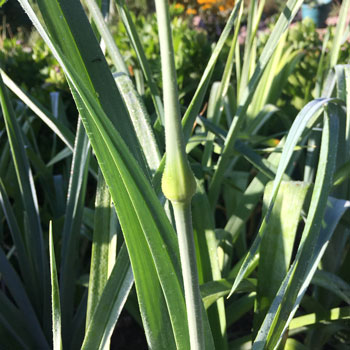
Bud Forming
This isn’t problem as such, it’s just part of a leek’s natural cycle. Eventually the bud will open into a lovely white flowerhead, that looks like a large wild garlic flower. You’d normally expect this to happen in early spring, but when a plant gets stressed – perhaps too cold/hot/wet/dry – it can ‘bolt’ early.
If you do see buds forming, harvest the leek immediately to use in cooking, as the central stem will now start to toughen and isn’t pleasant to eat. If you catch it early, you should be fine, and if it is a struggle to cut, just remove the tough central part and use the outer layers as normal.
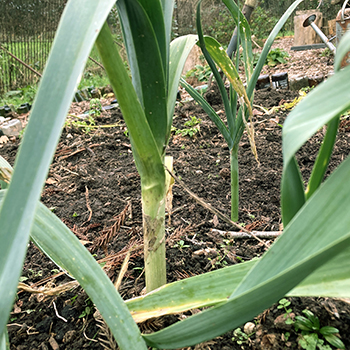
Narrow Stems
Sometimes you will find that the leeks don’t fatten up as much as you’d expect, or that there is very little white to the stems.
This usually comes down to planting method – we’d recommend watching our video on how to plant leeks – and the leeks not getting enough quite enough depth and space.
You can still harvest them and treat them as baby leeks, as they are unlikely to fatten up much more now before they form buds in early spring.
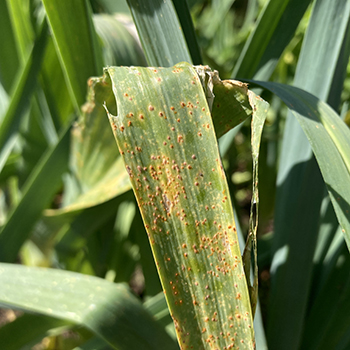
Leek Rust
If you start to see orange-brown marks appearing on the foliage, it is probably leek rust, a fungus that develops on the leaves of any alliums – leeks, onions, garlic – and it’s not uncommon, especially at this time of year.
If yours are affected, it is best to pull up your leeks and you can still eat them once affected foliage is removed. To prevent it in the future, try not to overcrowd plants, and do not use a liquid feed.
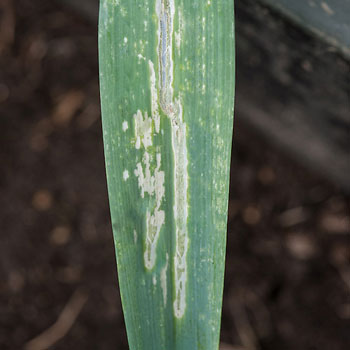
Leek Moth
Leaves that have white, papery strips like these are a sure sign of Leek Moth damage. The moths lay their eggs, the eggs hatch and the caterpillars feed off the leeks. You may be able to see the caterpillars, or the cocoons as well as the damage to foliage.
If this is a problem in your patch, try rotating crops next season and grow leeks under insect proof mesh netting or fleece.
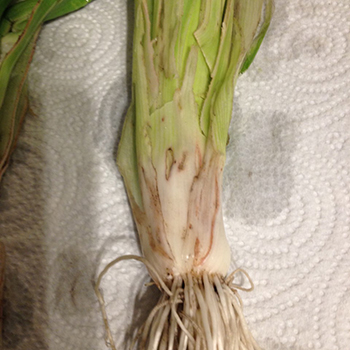
Allium Leaf Miner
This fly lays its eggs on leeks, onions and other alliums, and when the maggots hatch they eat little tunnels from the leaves, leaving a trail behind them.
Again, if this is a problem in your plot, rotate crops next season and grow leeks (and onions/garlic) under insect mesh.
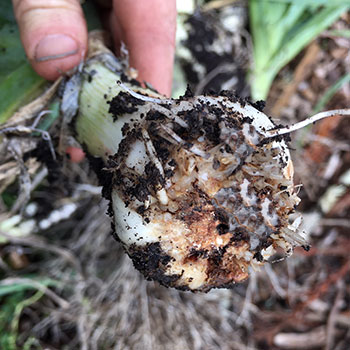
Onion White Rot
This is another fungal disease that can be a real nightmare if it takes hold. You may first see leaves turning yellow, and then at the base of the plant a white fluffy mould (it’s not very clear in our picture, so do a quick google if you’re unsure as there are better photos out there that will help you to diagnose it!)
Annoyingly, the fungal spores live in the soil and can last quite a long time…up to 15 years sometimes! If it has hit your plot, then the best option is to not grow onions/leek/garlic for a few seasons and keep adding plenty of organic matter to your soil to help it recover itself.

